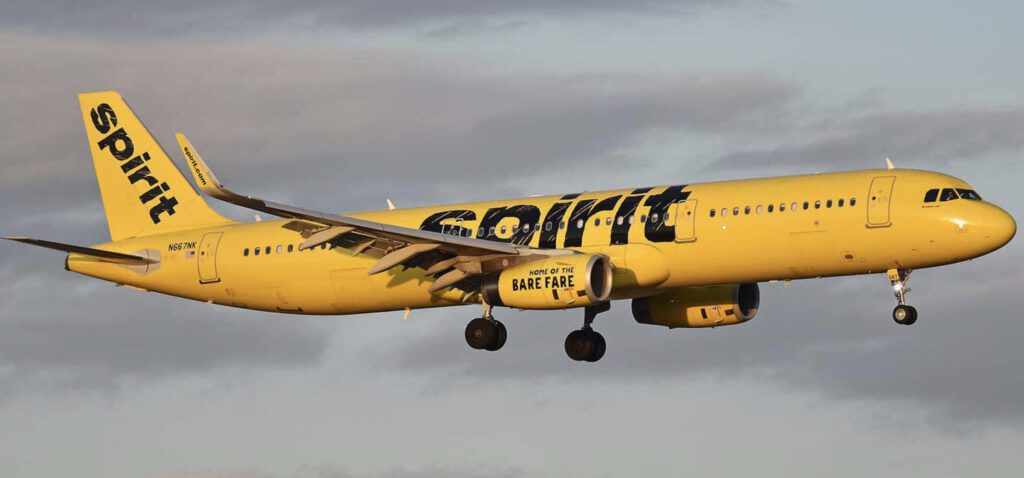
Spirit Airlines has entered Chapter 11 bankruptcy with a preplanned filing that will enable it to continue normal operations while restructuring its debt. In an arrangement with lenders, Spirit will convert debt into equity in the restructured airline to provide the airline breathing room, as nearly $1 billion of debt was to become due in early 2025. While the new arrangement provides some breathing room, it by no means is a guaranty of success, although under the plan, the carrier should emerge from Chapter 11 in March, 2025.
Changing Times
Spirit’s business model has been failing, post-pandemic, as the market for low-cost travel is changing. With stronger bare-bones fares from major airline competitors to overcapacity on key leisure routes to Orlando and Las Vegas, low cost carriers, including Spirit, are struggling. Add to that the failure of the planned Spirit-JetBlue merger, and that combination resulted in an unsustainable level of losses in recent quarters forcing the drastic action of a Chapter 11 filing..
With low fare capacity now being reduced in leisure markets by several carriers, a window of opportunity to restructure may exist for Spirit, but that will also depend on competitive pricing and behavior. As the butt of late night talk show jokes, Spirit has a lower preference profile than its major airline competitors. It is also clear to analysts that when competing bare bones offerings from majors sell out, the price sensitive then move to Spirit. A few more low fare seats, offset by higher premium fare revenues, could put the company, and other ULCCs like Frontier, in an untenable financial position. Spirit hasn’t shown a profit since before the global pandemic.
Spirit CEO Ted Christie was characteristically optimistic, despite the Chapter 11 filing. “This set of transactions will materially strengthen our balance sheet and position Spirit for the future while we continue executing on our strategic initiatives to transform our guest experience, providing new enhanced travel options, greater value and increased flexibility,” he said.
Valuable Assets
One of the company’s key assets is its fleet, which consists primarily of Airbus A320neo family aircraft, along with a number of Airbus delivery positions between 2025 and 2030. The carrier operates 213 aircraft, most of which are relatively young. Their A320 fleet averages 6.2 years old and their A321s 4.6 years. Contracts for 63 A321neo deliveries and 24 A320neo positions, a total of 87 additional aircraft, could easily be resold to other airlines during the current period of aircraft shortages. Several competitors that are seeking additional lift may place additional pricing pressure on the carrier in hopes that those positions could be abandoned by Spirit. Several carriers would love to secure those aircraft to replace late deliveries in their fleet plan.
The Bottom Line
Spirit has changed its business model to better compete, adding packages and bundles rather than their traditional strictly a la cart menu. While this may help them to better compete with majors, traffic has continued to grow for the carrier. Unfortunately, with more competition, their revenues have fallen, rather than grown. The drop in fares has been devastating for the company, which has been unable to absorb recent cost increases, resulting in losses. We are not optimistic that conditions will turn around quickly enough for Spirit to remain viable, even after restructuring.
Post restructuring, however, a potential merger with Frontier, which is also struggling, could make sense. Both carriers operate similar business models, new Airbus A320neo family narrow-body fleets, and networks with little overlap. A larger ultra low cost carrier, with critical mass, could better compete with the legacy carriers. Time will tell.
Views: 33




